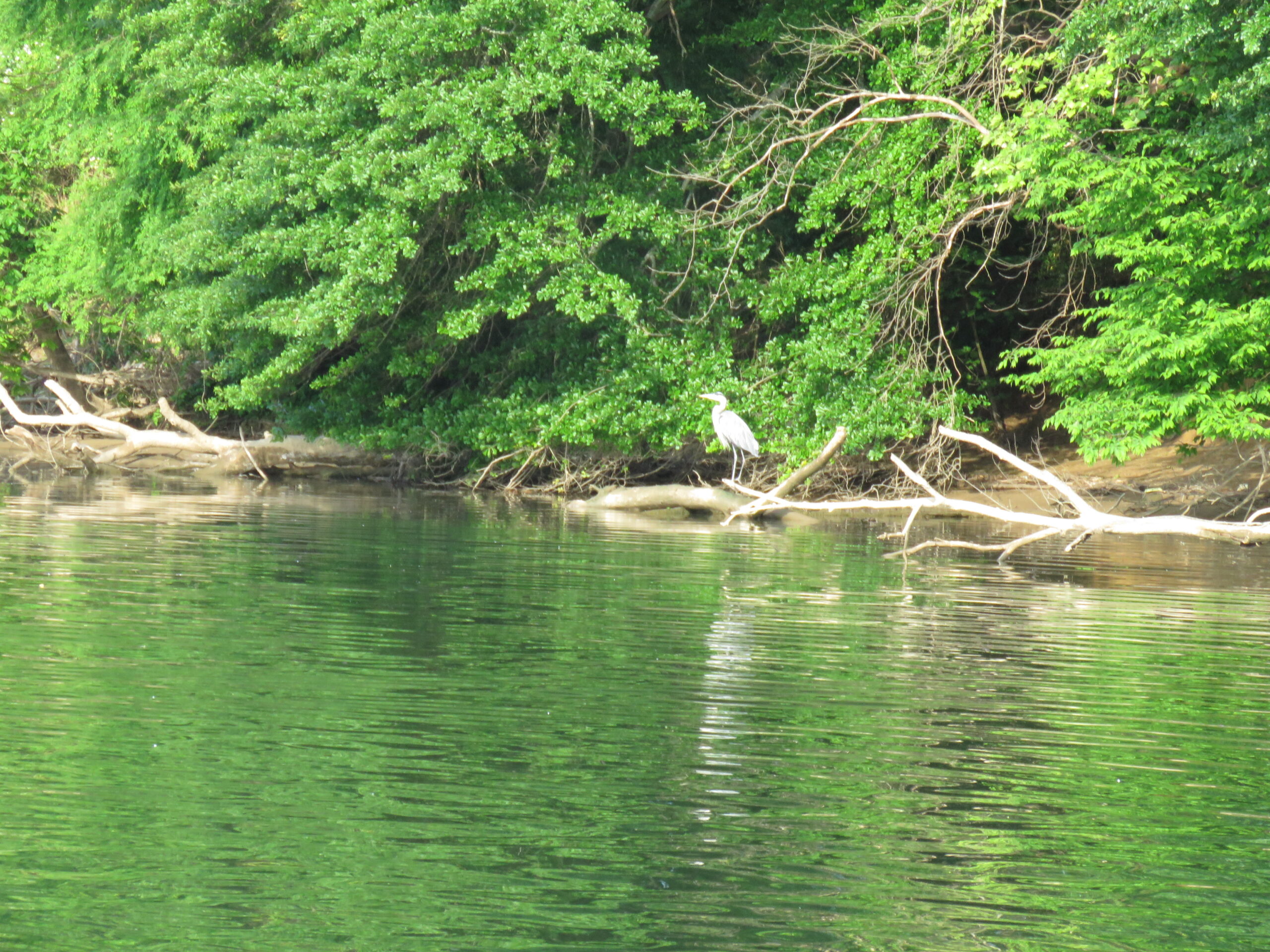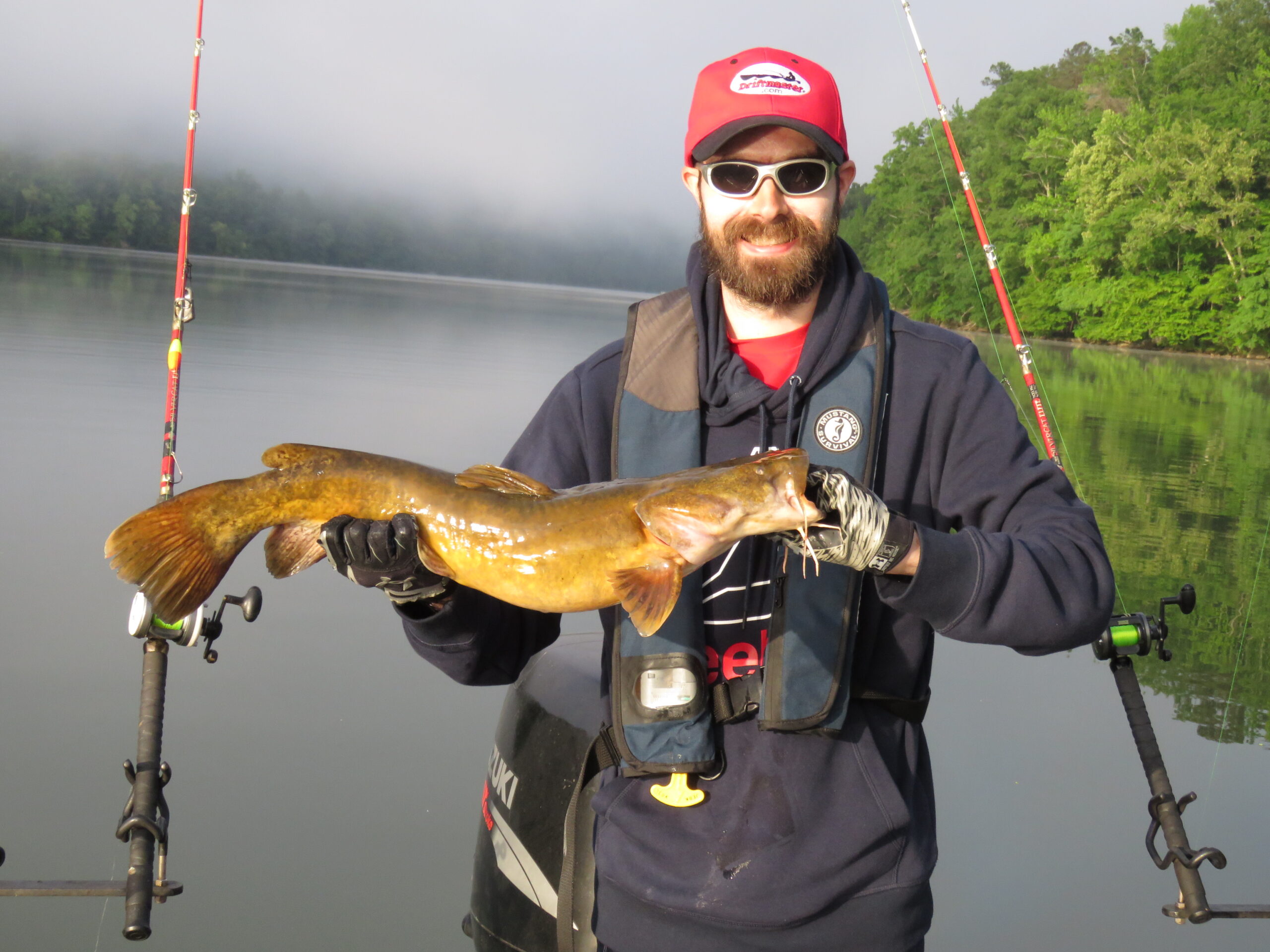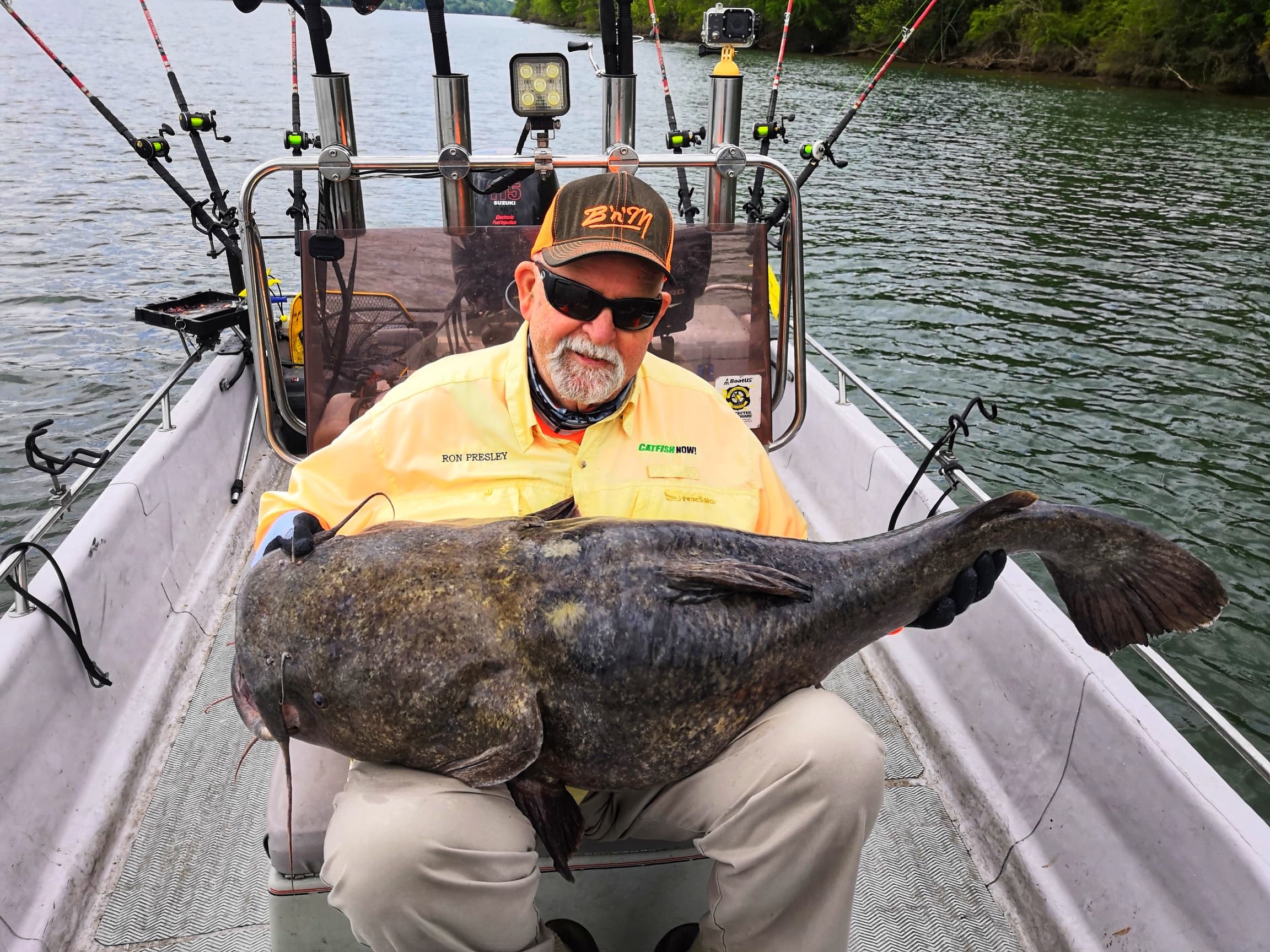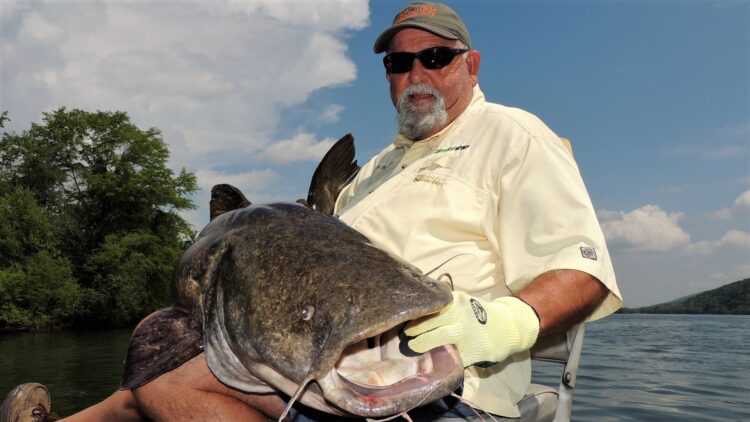Catching Spring Flatheads
by Ron Presley
Flathead catfish are known for their finicky bite but powerful fight.
It’s no secret, catfish anglers love the early to late spring flathead bite. Generally, the time frame from April Fools Day through the end of May is prime flathead fishing time. That range can be adjusted on either end as you move from south to north as water temperatures vary.
Flathead anglers continually debate live versus cut bait and day versus night fishing. And if you fish in tidal water you have another variable to consider, the tide. Just remember, flatheads are caught under all those conditions so go when you can.

Finding the right habitat and plenty of food are key factors in finding and catching trophy flatheads. Anglers pretty much agree that flatheads are attracted to woody structures in the form of blowdowns, logjams, and other combinations of cover. Large rocks and boulders are prime examples of a great flathead habitat.
Most anglers also agree that flatheads love depth changes that occur naturally around deep holes that can be found on the outside bends of rivers. Strong current will scour out deeper holes in the bends and where tributary creeks enter the main channel. Combine the deep holes with cover and good things are bound to happen.
To be effective, modern flathead anglers rely on electronics to narrow down the fish-holding structure. Anglers who find a combination of flathead attractors are likely to have the success they are looking for.
Setup
In today’s catfish world, many anglers are investing in technology to help them find and catch more flatheads. Although anglers have been catching flatheads for years without modern equipment, today’s successful anglers are likely to use some type of electronics in their search.
Jay Gallop and his fishing partners Joey Pounders and Dustin Goodwin are three of many anglers that have a passion for flathead fishing. They improve their chances by using sonar to find and mark fish. They use both down imaging and side imaging at the same time while they search and mark likely flathead habitats. They mark the likely places with waypoints that they can return to later and fish.
“I use sonar to find where the fish are going to be, revealed B’n’M Poles pro-staffer Gallop in a 2022 story in CatfishNOW with Joey Pounders and Dustin Goodwin. “Then I can set up the boat and get it in the right position to present my baits where I marked the cover or structure. I spend lots of time behind the steering wheel looking at the graphs before casting out the first bait.”
When it comes time to fish, the data collected while scanning can be used to measure the distance from the boat to the fishing spot and make a precision cast to the area. The angler must dedicate the time needed to learn his particular sonar unit and use it to his advantage.
“Once set up we click on the waypoint icon to measure how far away from each tree we are and then cast our bait accordingly,” added Joey Pounders. “I like to fish the structure right behind the boat because it is easier to cast out baits.”

Rigging and Bait
There are many good flathead poles on the market for anglers to choose from. Pounders, Gallup, and Goodwin choose the B’n’M 10-foot Sliver Cat Magnum rods. They rig the long two-piece rods with spinning reels. They believe they can get a softer presentation of their live baits to the waypoints they want to fish. Each rod is then placed in Driftmaster rod holders to wait for the bite.
The main line from the reel is an 80-pound braid tied to a three-way swivel. A 60-pound monofilament hook drop is tied to the middle eye on a three-way swivel with a red 8/0 Boss Kat offset circle hook. The rig is completed with a break-away sinker drop tied to the bottom eye of the swivel using a 25-pound monofilament leader.
Michael Haney and Rodney Crimm are not stuck in the common flathead reasoning that live bait is necessary. They will occasionally include live bluegill or another kind of live bait in a spread, but mostly they use cut skipjack.
It is more important to have “good bait,” according to Crimm. They personally catch and process their own skipjack to ensure that they have quality bait. They immediately place a freshly caught skipjack on ice and follow up by vacuum sealing it to retain freshness.
Pounders, Gallup, and Goodwin prefer live bait with live gizzard shad being their number one choice. They like to catch bait fresh daily, hoping for a net full of 7- to 10-inch shad.
“Bigger shad are more lively and more likely to tempt a big flathead out of the cover,” advised Gallup. “A 5- to 10-pound flathead can eat a 10-inch shad easily. A flathead is built to eat big baits and bigger shad attracts larger flatheads.”

Final Thoughts
As the debate continues on whether to use live bait or cut, it is worth noting that flatheads are also caught on artificial bait. Keith Severns is a Kansas angler that regularly targets flatties with great success using artificial baits.
He uses different approaches under different conditions but prospects successfully with a basic horizontal presentation.
“I cast paddle tail swimbaits or Gulp Eel as I prospect for flatties,” offered Severns. “I swim them at different depths, different speeds, and give them different erratic twitches. If that doesn’t work, I target active suspended fish by tying a Gulp Eel at different depths under a float and fish it near likely spots.”
The point is, don’t be afraid to try something different. Severns even throws big crankbaits and big bucktails to create a reaction strike when nothing else is working.
Anglers who want to learn more about flathead fishing should heed the advice of experienced flathead anglers any time they can. Below are links to six full stories and a complete issue of CatfishNOW related to flathead fishing. They are loaded with information to make your flathead adventures more productive.
For more in-depth stories on flathead fishing visit any of the following CatfishNOW issues: November 2016, October 2017, March 2018, October 2021, September 2022, and April 2023. Finally, you might want to look especially at April 2021 which is dedicated to flathead fishing.
Many more stories on flathead fishing or any other catfish topic that interests you can be found by using the search function on the CatfishNOW website.



